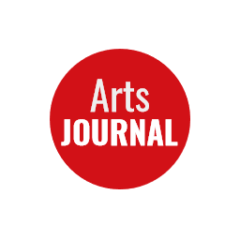“The decision” — made just a few hours before the gavel was to fall at Sotheby’s — “not to move forward with the offloading of paintings by Clyfford Still and Brice Marden, plus an Andy Warhol canvas through a private sale, follows weeks of controversy, which culminated in indirect censure from the Association of Art Museum Directors.” – Artnet
Category: visual
Postponed Philip Guston Exhibition Moved Up To 2022 After Heavy Criticism
“The National Gallery and three other major museums” — Tate Modern in London and the Museums of Fine Arts In Houston and Boston — “had announced that they were delaying the retrospective, which was originally intended to begin its tour last June, after taking into account the surging racial justice protests across the country. … Some critics said the decision to delay the retrospective amounted to self-censorship fueled by fear of controversy.” – The New York Times
Who Gets Credit For Art Created By AI?
Researchers at MIT Media Lab and the Max Planck Institute for Human Development are wondering how people decide who gets credit for art that was created using artifical intelligence. After all, there would have been many different people involved in producing and selecting the original art used as the AI’s training data, in creating the program, and in curating the final output. In a recently published paper they showed that who gets credit for AI-generated art all depends on how we think and talk about the role of AI. – Forbes
Brussels Re-Closes Its Museums As COVID Cases Surge; Other European Museums To Follow
Museums and galleries around Europe are bracing for further restrictions as the infection rates rise to their highest levels yet. Institutions in Wales have been closed as the country implemented a two-week national “firebreak” lockdown that began October 24. Meanwhile, museums and galleries in Northern Ireland were asked to close on October 16 for four weeks. – Artnet
A Brief History Of Fights Over Museums Selling Off Art
“Deaccessioning is hardly new in the art world, however, and neither are the debates surrounding it. Below, a look back at some of the most notable deaccessioning plans from the past five decades.” – ARTnews
The World’s Whitest White Is Here, And It Can Help Fight Climate Change
In the past few years we’ve seen the debuts of the world’s blackest black (several times) and pinkest pink. Now comes a white acrylic paint, developed by engineers at Purdue, that reflects 99.5% of light and stays cooler than the ambient temperature even in the brightest sunshine. Meanwhile, artist Stuart Semple (who created that super-hot pink) has developed his own Whitest White, which (he says) reflects 99.6% of light. – Artnet
NY Museums Reopened. But Are They Sustainable At 25 Percent?
Over a month after most of New York’s most prestigious museums reopened to the public, they are experiencing an existential crisis, fueled by the state-mandated reduced capacity of 25 percent. While the public face of New York City museums welcomes back these visitors with a smile and the promise of a safe experience, administrators behind the scenes anxiously wonder how long they can feasibly stay at that meager occupancy without making significant cuts to staffing or programming. – The New York Times
Unpacking The New Stack Of Boxes At University Of Chicago
This is a bold building by, and for, bold thinkers — even if we don’t know yet whether it is truly meets the test of form that follows function. – Chicago Tribune
African Activist Arrested For Trying To Take Asian Artifact From Louvre
Just a week after he was given a fine but no jail time for attempting to take pieces of African art from another Paris museum, Mwazulu Diyabanza — who calls his acts political protests demanding the return to Africa of artworks looted by European colonizers — was stopped by Louvre guards after lifting and carrying off a sculpture. In a video of the incident, Diyabanza declares, “I came here … to take back what was pillaged from Africa.” The sculpture is from the Indonesian island of Flores. – Artnet
The End Of Fashion Photography As We Know It
The fashion world is in crisis: It is producing too much, moving too fast, and, with worrying frequency, offending consumers due to an inability to pivot convincingly from a position that champions a censoriously narrow vision of beauty. Brands are closing, and magazines are folding or becoming fully digital. Can the fashion photograph, of the sort that has littered bedroom walls and been reposted again and again on Instagram or Tumblr, survive? – The New York Times
